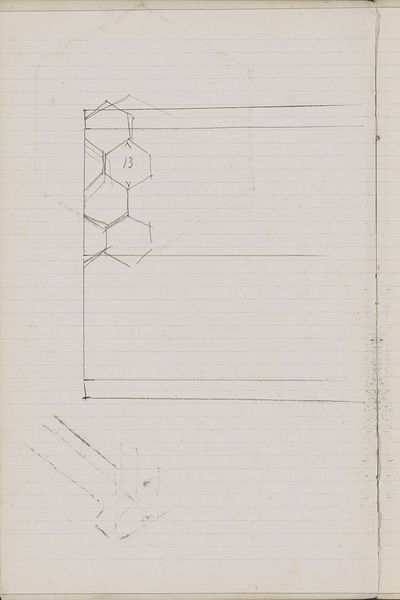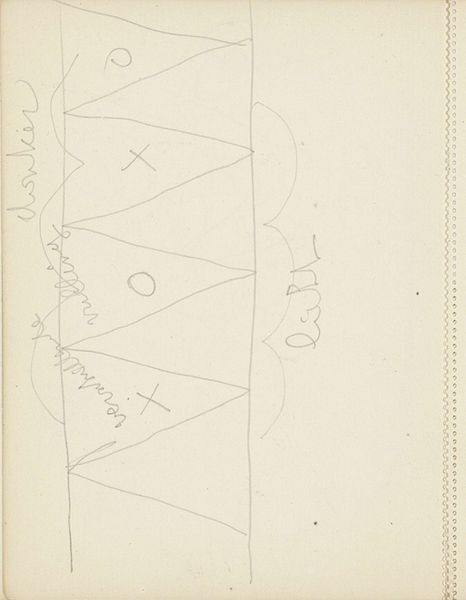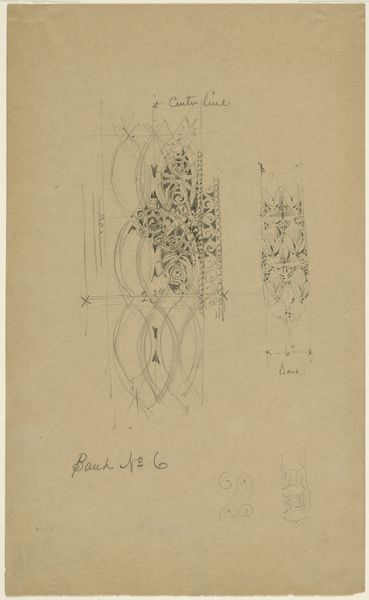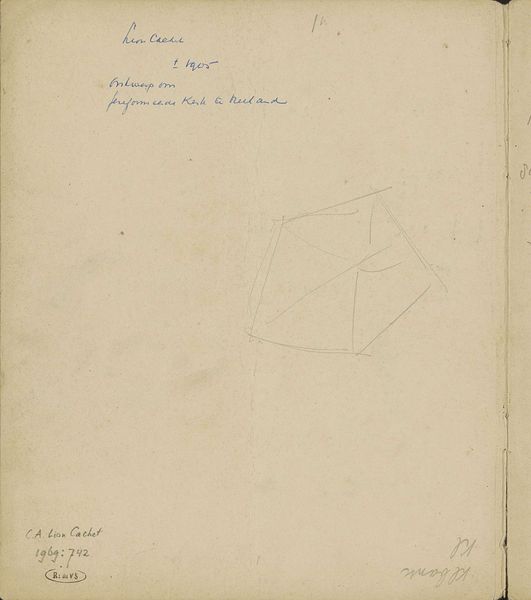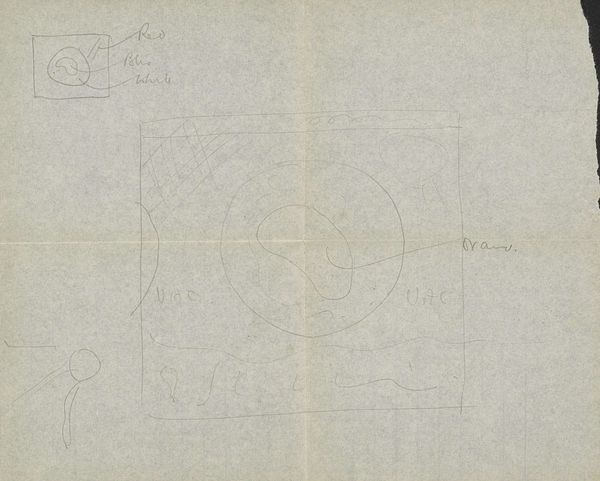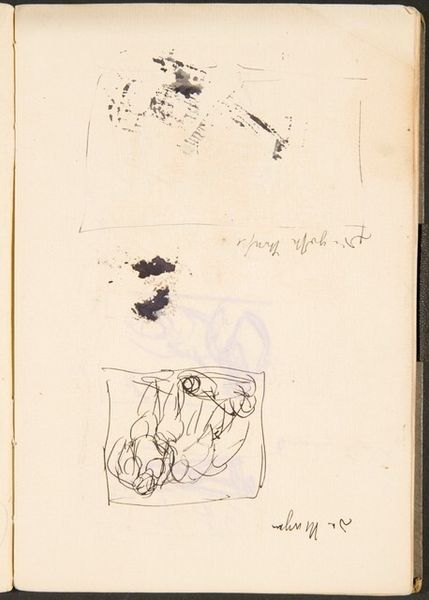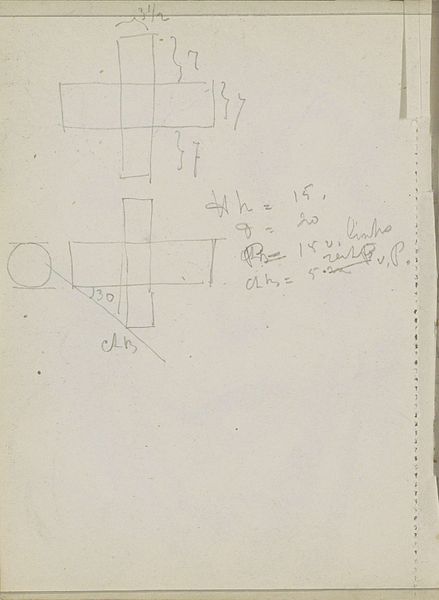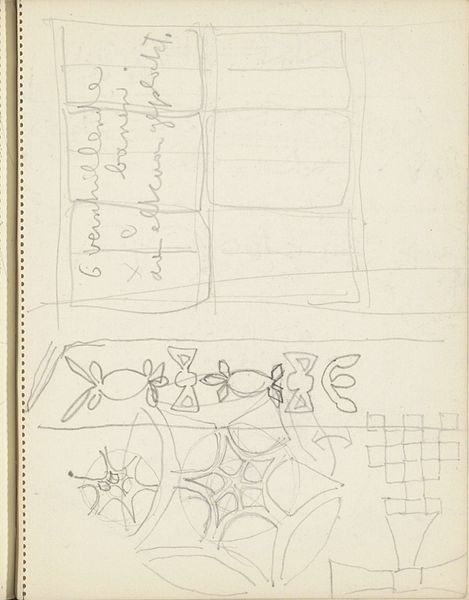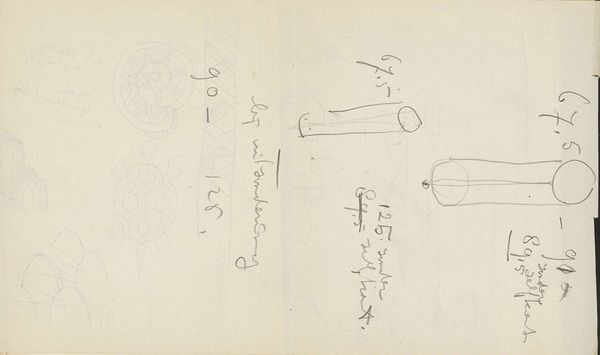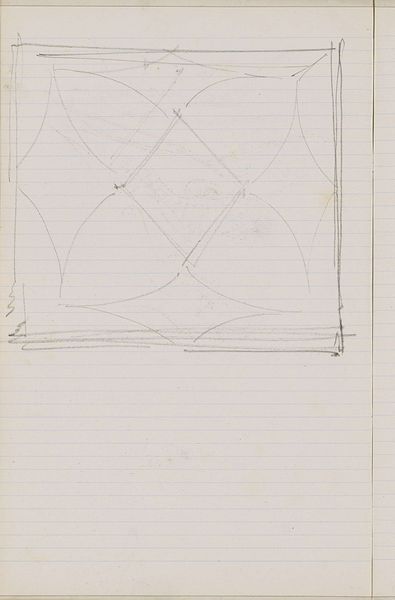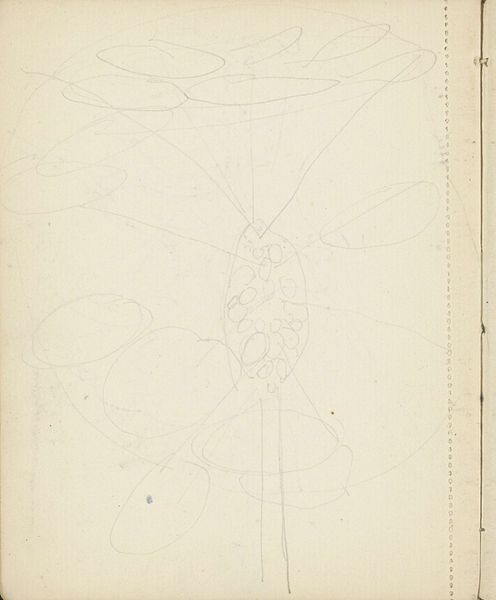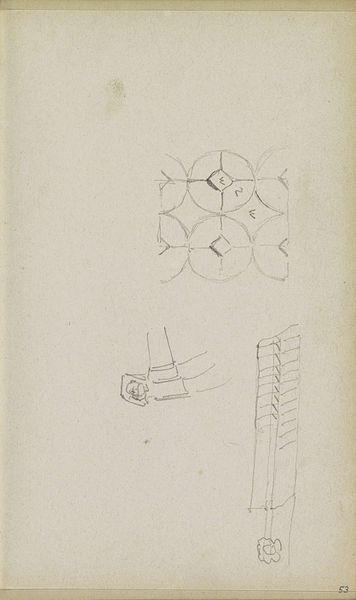
drawing, graphic-art, ornament, paper, pencil
drawing
graphic-art
ornament
art-nouveau
paper
geometric
pencil
line
Copyright: Rijks Museum: Open Domain
Curator: Here we have "Fantasieornament en een ornament met sterren," or "Fantasy Ornament and an Ornament with Stars" by Carel Adolph Lion Cachet, dating from between 1874 and 1945. It’s a pencil drawing on paper, part of the Rijksmuseum’s collection. What are your first impressions? Editor: Well, it feels very much like a draft, incomplete, almost a peek into the artist’s mind as he's working through ideas. I find that intriguing; the sketch-like quality gives it an immediacy and vulnerability that finished pieces often lack. Curator: Exactly. Lion Cachet was deeply involved in the Art Nouveau movement, and the style reflects that—observe the flowing lines, the emphasis on nature-inspired forms even within geometric shapes. These weren’t merely decorative elements. Ornament in the Art Nouveau period aimed to unify art and life, rejecting the industrial and embracing craftsmanship. Editor: Yes, and looking at the placement, the ornaments are positioned almost like contrasting ideas, perhaps the artist experimenting with juxtaposing different motifs. Is there any understanding of the political or social influences driving the ornament design at this time? What would such decoration have represented in public spaces, in homes? Curator: The period was ripe with change; socialist ideas were gaining traction. The rise of decorative art was considered by some as democratizing art, making it accessible in everyday life, as a critique of elitist artistic institutions. But also, ornamental design during this time becomes heavily associated with constructing nationalist sentiments and even advancing colonial agendas. The symbolism is rarely straightforward. Editor: This raises complex questions about accessibility and control. Even in supposedly 'democratic' artistic expressions, systems of power are very subtle but very present, dictating the kinds of images deemed worthy or 'beautiful'. Curator: Precisely. Lion Cachet was operating in a milieu grappling with its identity, with shifts in power dynamics both social and colonial. This small study offers insights into the aesthetics that played a key role during intense ideological realignments. Editor: Thinking about ornament as both a form of resistance and a tool for promoting particular viewpoints certainly complicates our reading of this artwork. I appreciate how examining an ostensibly simple drawing reveals complex sociopolitical currents. Curator: Indeed. It makes us consider art’s public role, how aesthetics become entwined with broader power structures, something often overlooked when studying traditional painting or sculpture. Editor: Thank you, that reframes the context quite substantially. I will be thinking about those star ornaments and what systems they could be reinforcing long after our discussion.
Comments
No comments
Be the first to comment and join the conversation on the ultimate creative platform.
